Genre can be liberating, in an artistic sense. To follow and break the rules at the same time can lead to moments of true serendipity. For me, it has elevated the concept of form, the actual structure of the novel, to become the most crucial element, because as in architecture, form follows function… . In effect, the conventions of genre have opened up new vistas of form to explore, new ways of telling a story that demand much from me as an author.
—Lee Irby* in Genre as Liberation: On Learning to Manipulate Thriller Tropes
Related Article:
1. Cloud Atlas by David Mitchell
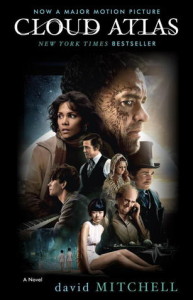 In this brilliant novel David Mitchell uses intertwined stories to demonstrate how individual people and their fates are connected across space and time. The literary genres featured here include autobiography, philosophical inquiry, mystery, and speculative fiction in a narrative framework that circles back on itself to create the paradox of discrete moments within the vast expanse of human experience and history.
In this brilliant novel David Mitchell uses intertwined stories to demonstrate how individual people and their fates are connected across space and time. The literary genres featured here include autobiography, philosophical inquiry, mystery, and speculative fiction in a narrative framework that circles back on itself to create the paradox of discrete moments within the vast expanse of human experience and history.
The novel tells six stories presented in the following order:
1—2—3—4—5—6—5—4—3—2—1
This narrative structure underscores the theme of interconnection of all humanity across time and cultures.
2. Before the Fall by Noah Hawley
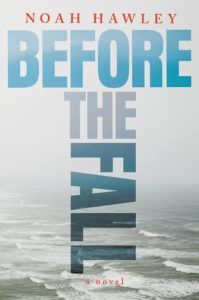 Usually in chronological narratives the most dramatic point happens somewhere between the midpoint and the end. But in this novel the high drama occurs near the beginning: On a foggy summer night 11 people board a private jet on Martha’s Vineyard headed for New York. As the plane takes off, “none of them has any idea that sixteen minutes from now their plane will crash into the sea” (p. 11). The only survivors are a struggling painter, Scott Burroughs, and the four-year-old son of the media mogul who chartered the plane.
Usually in chronological narratives the most dramatic point happens somewhere between the midpoint and the end. But in this novel the high drama occurs near the beginning: On a foggy summer night 11 people board a private jet on Martha’s Vineyard headed for New York. As the plane takes off, “none of them has any idea that sixteen minutes from now their plane will crash into the sea” (p. 11). The only survivors are a struggling painter, Scott Burroughs, and the four-year-old son of the media mogul who chartered the plane.
An investigation ensues, lead by several law enforcement and safety agencies and the manufacturer of the jet. The remainder of the novel comprises chapters alternating between the current investigation and the backstories of the people on the plane.
Hawley’s structure for this novel reminds me of the television series Motive, a summer series aired by American television network ABC between 2013 and 2016. Each episode opened with a brief look at two people, the victim and the killer, living their lives. The remainder of the show detailed the detectives’ investigation of the murder as they tried to determine the motive and identify the killer. The key to solving the crime lay in finding exactly when, where, and why the victim’s and the killer’s paths crossed. The examination of the crash in Hawley’s novel proceeds the same way as investigators examine the lives of the passengers to figure out which one of them had a reason to sabotage the plane.
I’ve read a number of descriptions of this novel that say the climax, the plane crash, occurs at the beginning. But I don’t agree with that. The crash isn’t the book’s climax; as dramatic as the crash is, it’s merely the catalyst for the action that comes after it. In other words, the plane crash is a subplot that provides drama and suspense. The main story is Scott Burroughs’s rescue of the boy and what he does afterwards. The narrative structure suggests this interpretation by dispensing with the plane crash early on and focusing later on Scott’s story.
3. The Time Traveler’s Wife by Audrey Niffenegger
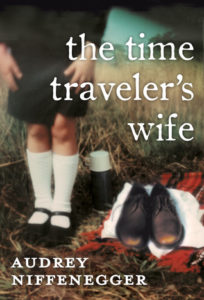 Henry and Clare are passionately in love and vow to hold on to each other despite Henry’s chrono-displacement disorder, a genetic condition that causes him to travel through time whenever he’s highly stressed. Henry has no control over when he will be thrown into time or what time he will land in. Throughout the novel the current Henry lands in many different time periods of Clare’s life.
Henry and Clare are passionately in love and vow to hold on to each other despite Henry’s chrono-displacement disorder, a genetic condition that causes him to travel through time whenever he’s highly stressed. Henry has no control over when he will be thrown into time or what time he will land in. Throughout the novel the current Henry lands in many different time periods of Clare’s life.
Because of the nature of Henry’s condition, the book moves around in time with no obvious ordering. This seeming lack of a narrative structure can make reading this novel difficult. I found, though, that I didn’t need to try to force the various meetings between Henry and Clare into a strict order. Much of the pleasure of this novel lies in just watching how the two maintain their relationship throughout their lives.
4. Swimming Lessons by Claire Fuller
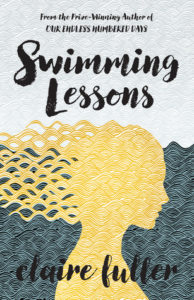 There are as many sides to any story as there are participants in the story. This dysfunctional-family novel—which is developing into quite a subgenre—employs an intriguing narrative technique to give several family members their say.
There are as many sides to any story as there are participants in the story. This dysfunctional-family novel—which is developing into quite a subgenre—employs an intriguing narrative technique to give several family members their say.
The novel centers around the marriage of Ingrid and Gil Coleman. The two met when Ingrid took a university writing course with the famous novelist Gil Coleman. The two became lovers and got married when Ingrid got pregnant just before the start of her final year at university. People warned Ingrid that Gil was a notorious womanizer, but Ingrid insisted she was in love and wanted to get married. Over the course of their 16-year marriage the couple had two daughters, Nan and Flora.
As the book opens, Ingrid has been missing for almost 12 years. She went out for an ocean swim one day and never came home. Nan, now in her late 20s, still harbors resentment over her mother’s disappearance, since Nan was forced into the role of mothering Flora, her younger sister by five and a half years. Flora has never accepted her mother’s death and still hopes that she will return one day. When Gil, now an old man, takes a bad fall, Nan summons Flora home to help care for their father. Before his fall, Gil had been searching through the thousands of books in his house because he discovered that Ingrid had left letters about their life together hidden in some of them during the month before she disappeared.
Those letters are Ingrid’s way of telling “my truth” (p. 17). There are three time periods at play in the novel:
- 1976 on, from the beginning of Gil and Ingrid’s life together
- June 2 through July 2, 1992, when Gil has been away from the family for months and Ingrid writes the letters detailing her life with him
- 2004, the present, while Nan and Flora care for the dying Gil
In each of her letters Ingrid implores Gil, who has been away for months, to come home to his family. She then continues the narration of their life together. Ingrid’s letters therefore cover the first and second time periods, while the novel narrates the present in third person. These third-person sections present the lives of Gil, Nan, and Flora. Chapters alternate between the present and Ingrid’s letters, given in sequence.
As the book opens, Gil has just found Ingrid’s last letter. We see this letter again, and finally get to read it, near the end of the book. In this way the narrative structure provides closure for Ingrid and her story.
5. All the Missing Girls by Megan Miranda
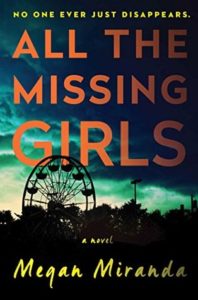 Ten years ago Nic Farrell left her small hometown of Cooley Ridge, North Carolina, when her best friend disappeared under mysterious circumstances. Now known as Nicolette, she works as a counselor in Philadelphia and is engaged to a lawyer when her brother summons her home to help make decisions about their father, who’s in a care facility experiencing early signs of dementia.
Ten years ago Nic Farrell left her small hometown of Cooley Ridge, North Carolina, when her best friend disappeared under mysterious circumstances. Now known as Nicolette, she works as a counselor in Philadelphia and is engaged to a lawyer when her brother summons her home to help make decisions about their father, who’s in a care facility experiencing early signs of dementia.
The trip home, to the past she has purposely left behind, unsettles her. The situation intensifies when another young woman vanishes under circumstances similar to those of her friend’s disappearance. And suddenly Nic must try to find out what happened 10 years ago if she’s to understand what is going on now. Facing that necessity requires her to dig deeply into all the conflicting emotions and buried secrets about herself, her missing friend, and the people in the small, tight-knit community of Cooley Ridge.
But accepting buried secrets of the past is difficult, so, after an introductory section, Nic narrates her first-person account of her two-week investigation the only way she can make herself face it: backwards. As she explains near the end of her story:
I have to come at it from the side, grazing pieces here and there. Not looking it directly in the eye. I’ve never told it before. This is the only way I know how.
I’m getting there. (p. 333)
Reference
*Lee Irby, who teaches history at Eckerd College in Florida, is the author of the historical mysteries 7,000 Clams, The Up and Up, and Unreliable.
© 2017 by Mary Daniels Brown
